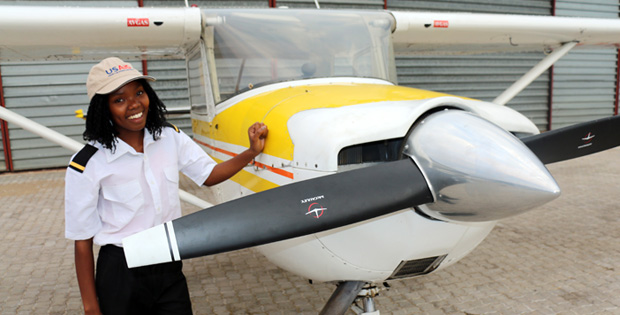
Bertha Mawano’s first memories were filled with the good smell of grilled beef from her mother’s roadside kapana stall in Rundu. Things were about to change, however – as Bertha told a Namibian magazine in 2014: “Then entered my stepfather…” They had to move 21 times, ending up among the zinc shacks outside Windhoek. Bertha was a bright girl, but without supportive adults, no child can navigate risks like those she faced. In Namibia, unsafe sex leads to pregnancy among 15 percent of girls aged 15 to 18: the biggest cause of dropouts among girls. Fewer than half of our students finish 10th grade, and our HIV prevalence is the sixth-highest on earth.
Starting in 2004, the U.S. Agency for International Development (USAID) promoted, alongside Namibia’s HIV response, an effort to help vulnerable teens build resilience and stay in school. With funds from the U.S. President’s Emergency Program for AIDS Relief (PEPFAR), it helped KAYEC set up school support centres across eight informal settlements nationwide, for 1,200 youths each year. Partner schools – 41 going into 2016 – select highest-need learners aged 10 to 18 to receive dedicated personal and educational support. It works: School drop-out rates fell by more than half compared to the children’s schools in 2013, as did drop-outs due to pregnancies compared to the national average. Participants come from schools where only 45 percent of their peers passed Grade 10, from 2012 to 2014 – yet 67 percent of KAYEC participants passed, despite their tough backgrounds.
Each afternoon after school, KAYEC’s Wanaheda centre became Bertha’s haven. As she told the magazine in 2014, she “became addicted to the place and the people. I would walk about 15 km to KAYEC.” She recalls how the centre gave her more than she expected: “We listened to them talking, and were just like, ‘Oh wow.’ My confidence boosted. There were a lot of skills that KAYEC taught us that weren’t taught in school. They teach you literally to think for yourself, for your life.” Bertha not only completed Grade 12, but got into the University of Namibia – then found herself dreaming higher, watching planes at the airport each Saturday. “One day I figured I had enough of the staring and hoping. I walked into the airport and asked the receptionist if I can come train there to become a pilot.” Since 2012 she has worked as an admin assistant in Namibia’s education ministries, paying her way first through her private pilot’s license, and now her commercial one. “When I’m in the air I remember my blue school jersey that turned purple through exposure to sun and rain, I think of the girls and boys who possibly dread the circumstances in which they are growing up.” Her next big dream? “I also hope to get into advocacy, helping kids find success – not only in Namibia but out of the country too.”

Comments are closed.